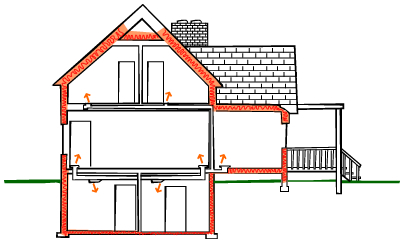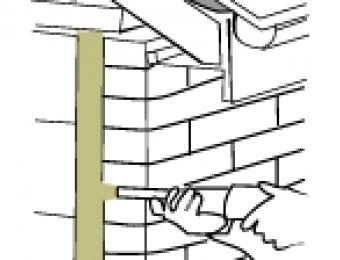
One of the main reasons we have walls in our homes is to separate us from the environment outside. This is particularly the case if the climate's extreme, as it is in so many parts of Australia. Good insulation in walls can make a huge difference to the comfort of your home, and lower your heating or cooling costs by helping to keep heat in or out of your home. The materials you use - in particular those used to build and insulate your walls - are crucial to effectively controlling your home's climate.
Thermal insulation
Most homes have their wall cavities filled with some kind of insulation. There are many different materials used for insulation, some of which are more effective at resisting thermal energy (or heat) than others. Homes built in climates which experience extreme heat and/or cold should be fitted with insulation that does not transmit temperature well. These types of materials are considered to have a high R-value. Examples of insulation with a high R-value include wool and polyester. To help evaluate what kind of insulation you should use in your home, check with your local council. If you're able, it's worth trying to kill two birds with one stone by choosing a soundproofing acoustic insulation with the right R-value for your climate.
Timber frames
Homes with a standard timber frame are insulated by inserting loose fill or solid batt insulation in between the wall studs. The interior face of the stud will be clad in plasterboard while a sheathing material such as oriented strand board lines the external side of the stud before the final exterior cladding is attached. This provides a narrow cavity in which to insert insulation. Double framing allows for more insulation to be installed and should be considered in climates with extreme temperatures.
Metal frames
Standard framing techniques often see the house frame acting as a thermal bridge, conducting cold inside the home when it is not wanted and vice-versa. This is a particular problem with metal frames, which are particularly efficient at conducting heat. In some climates it might be necessary to clad or insulate metal frames to reduce the amount of heat they conduct.
Alternative frames
Other framing methods often result in the frame, internal walls and external walls all being comprised of the one solid object. Although this can result in a tighter building envelope, there are times where more insulation is required.
Solid brick and masonry walls may have a small gap left in between two rows of bricks for insulation to be inserted. Double-rows of bricks in themselves offer fantastic thermal insulation - and besser blocks, thanks to a similar principle, offer similar advantages in thermal performance.
Log and stone homes might have insulation placed between the logs or stone and a plasterboard wall if necessary. Frames built with structural insulated panels obviously have insulation incorporated and generally do not require any additional insulation. Straw bale frames tend not to need extra insulation either. Mud brick and cob framed homes might be required to install insulation on the external wall, sandwiched between the bricks/cob and the render.





